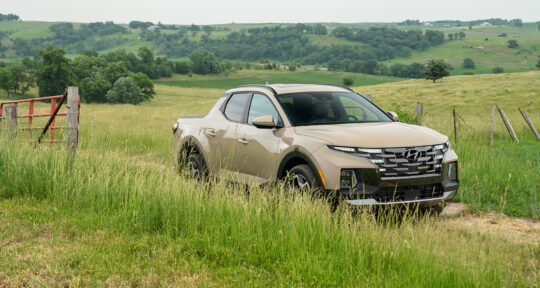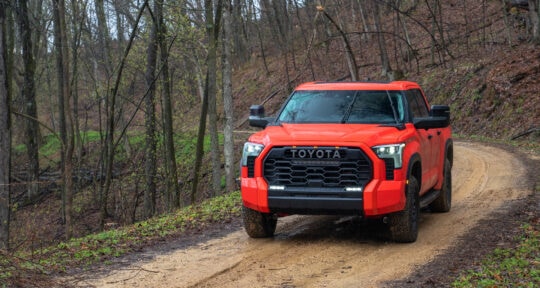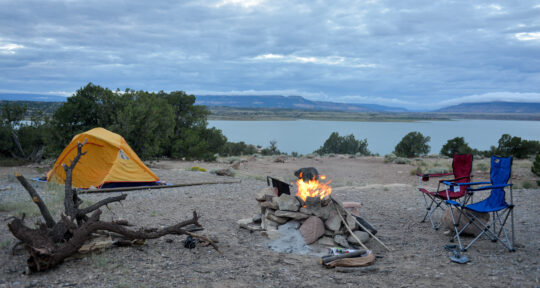As most Jeep enthusiasts will tell you, driving a Jeep off road is not about getting places fast—it’s about the ability to go anywhere. I learn this first-hand while in the driver’s seat of a Jeep Wrangler JL, tackling obstacles on backcountry trails in Moab, Utah.
I’ve been invited by Quadratec, a leading aftermarket Jeep parts and accessories company, to spend a few days at the Easter Jeep Safari (EJS). Now in its 56th year, EJS brings off-road enthusiasts from all over the world to Southern Utah for 9 days each spring.
Moab is known as an adventurer’s paradise, and for good reason. The town sits right in the middle of some of the most stunning and dramatic red-rock scenery in the country, and is a popular basecamp for visitors to nearby Arches and Canyonlands national parks. Moab’s backcountry terrain is packed with trails and other outdoor recreation opportunities for hikers, mountain bikers, and all kinds of off-roaders. In the last few years, participation in outdoor activities across the board has skyrocketed, and off-roading is no exception.

But with increased backcountry usage comes the need to invest in trail maintenance and protection, as well as educate new outdoors enthusiasts on off-road best practices. For the past 20 years, Quadratec has partnered with outdoor ethics non-profit Tread Lightly! to promote and fund various stewardship programs on public lands. And EJS is the perfect place to launch the company’s newest effort: a trail cleanup program dubbed “50 for 50.”
One down, 49 to go
It’s an early Wednesday morning at EJS and I’m in the passenger seat of a Jeep, meandering along the scenic Kane Creek Trail. We’re in the middle of a 20-vehicle-deep Jeep caravan, making our way to a heavily-trafficked off-road area where ancient petroglyphs are at risk. Eric Ammerman, director of creative content at Quadratec, is at the wheel.
“Off-road users have created a parking area in an area that shouldn’t be a parking area,” he says. “So we’re going there with the Bureau of Land Management and some archeologists to create a parking spot, to protect the area around the rock art, and show people where they need to walk and where they can park.”
The effort is the first of 50 in the new program, which will support one trail cleanup or maintenance project in each state over the next 2 years. On this day, more than 50 people have gathered to volunteer their time and skills, many from household names in the Jeep industry.
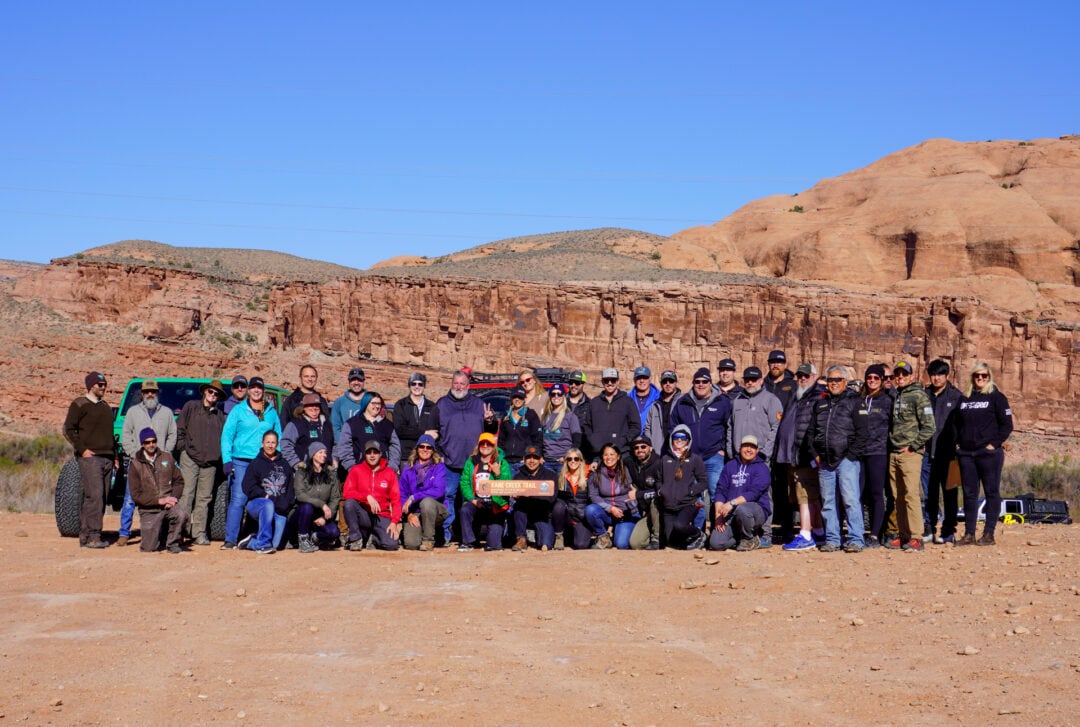
“We’re all making money off of off-roading, so we have a moral obligation to give back to what we enjoy,” Ammerman says. “If we don’t help protect these public lands and the off-road community, then we’re going to start losing our customer base.”
The “50 for 50” initiative is not limited to just off-road trails, however. Outdoor recreation takes many forms—from mountain biking to fly fishing to base jumping. But no matter the activity, almost everyone has to drive to get to it. “There’s a motorized part of almost every recreation that’s done in the United States,” Ammerman points out. And while Jeeps are common vehicles in the outdoor community, he adds, the “50 for 50” program welcomes projects and volunteers no matter what they drive. Aside from trails, other areas that may need maintenance and cleanup include campgrounds and fishing spots on public lands.
How to leave no trace during your summer road trip
With Utah checked off, many of the remaining 49 projects are still open to consideration, and anyone can submit a grant application on the project web page.
Protecting petroglyphs
The petroglyphs in the high-risk area have been carved into a large, protruding boulder that sits at a bend in the trail. If you didn’t know they were there, they’d be easy to miss. “This style is predominantly Ancestral Puebloan, around 2,000 years old, plus or minus,” says Lori Hunsaker, an archeologist with the BLM’s Moab Field Office. She points out ladder motifs and a collection of “trapezoidal or triangular-shaped anthropomorphs, or human figures.”
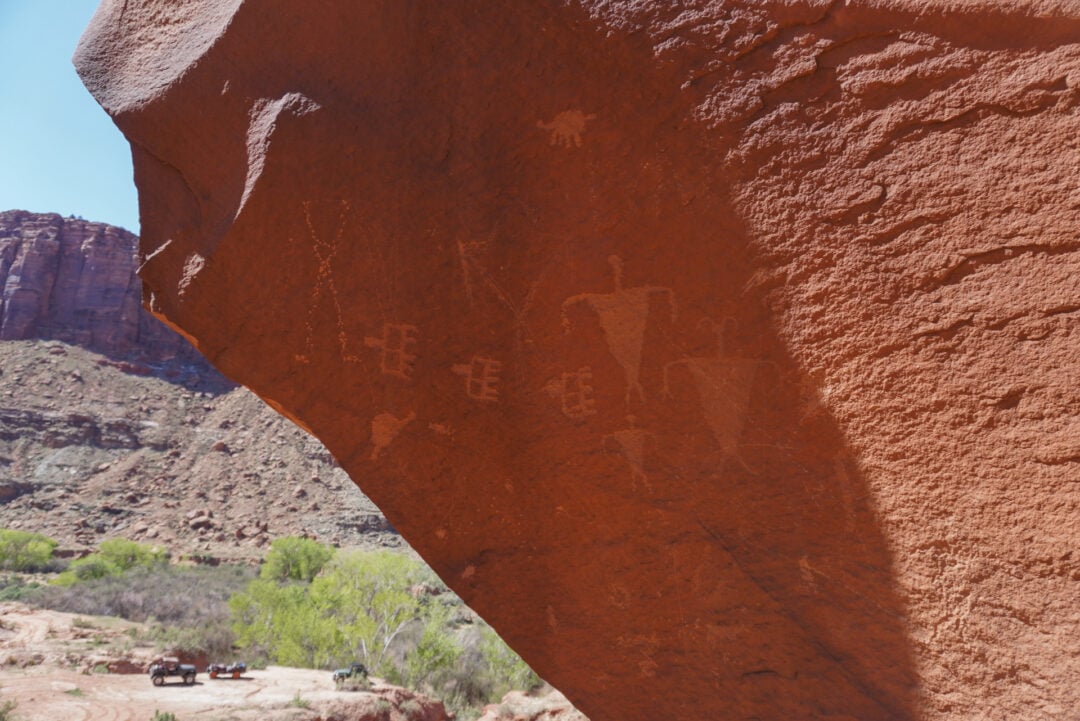
We’ve been careful to park our vehicles away from the carvings, in an area that’s already designated for parking. Venturing beyond established trails and pullouts is a big no-no, as it can damage surface vegetation and lead to soil erosion. In addition to preserving the rock art at this location, today’s project is also about protecting the fragile land surrounding it.
Special consideration is given to preserving biological soil crusts, which are formed on the surface of drylands all over the world. These crusts provide many critical benefits to desert ecosystems, and disturbing them can have long-lasting negative effects. Once damaged—by vehicle traffic or grazing, for example—it can take hundreds of years for the crusts to fully recover.
Hunsaker points to a section of darkened soil on the ground just a few feet from where we’re standing. “It’s not something that people are intentionally harming,” she says. “It’s something that most people wouldn’t notice.”
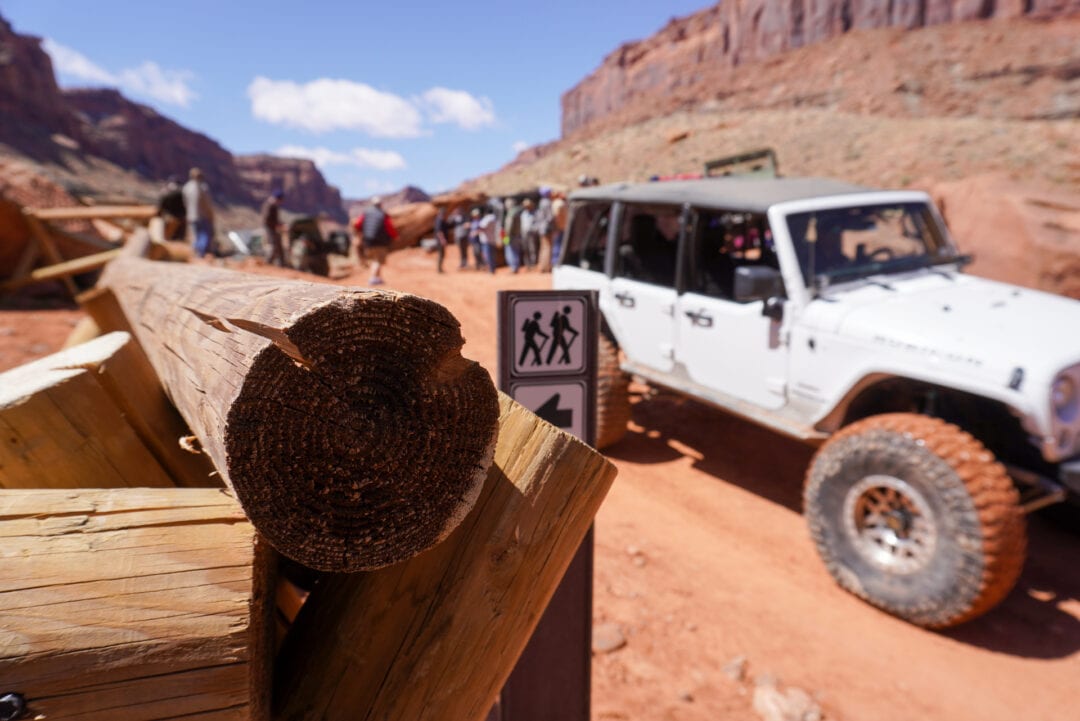
Around us, volunteers have already begun putting up fencing and laying out a designated walkway that leads to a small viewing area. Here, people can admire the petroglyphs without damaging the art or the surrounding ecosystem. “It’s really important that we preserve these locations. Something as simple as touching them with your hand can leave oils that will degrade the quality of that place,” says Evan Robins, the education and stewardship program manager for Tread Lightly!.
With so many people volunteering their time this morning, the project is finished quickly. The area we arrived at just a few hours earlier was a free-for-all site with impromptu parking areas and no clear walking path. Now, there’s a fence, a lined walkway, and clear signage directing people where to safely and responsibly enjoy this culturally significant location.
Hunsaker says she’s so moved by the engagement that she’s holding back tears. “It’s really nice to see that the public cares about their public lands and about these resources,” she says, “and that so many people are willing to come out and put in this time and effort to help protect the site or help manage and preserve it.”

